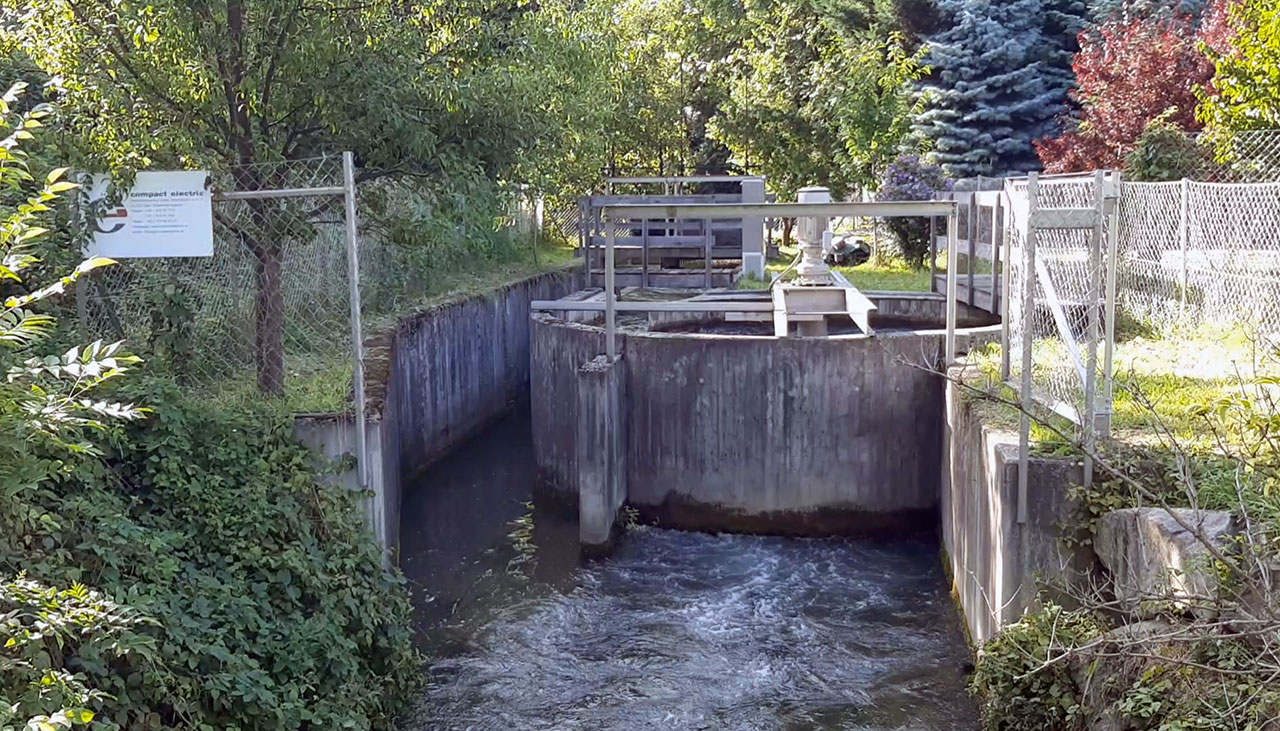The Guy Who Built His Own Hydroelectric Power Plant
Not many people can say that they developed and built a power plant in their backyard. Franz Zotlöterer can.
The Austrian engineer is experimenting with innovative forms of generating power that benefit humans and the environment.
It looks a bit like pulling the plug on a large bathtub when you look into the imposing vortex of Franz Zotlöterer’s power plant. He began building this small power plant on a millstream next to the Pielach River in Obergrafendorf (Lower Austria) in 2004. The centerpiece: an almost cylindrical basin, a good four meters wide and two meters deep. A turbine, somewhat reminiscent of a mill wheel, whirls in the middle. It drives a generator that produces electricity for up to 15 households.
A bicycle path and sidewalk run right next to it, and the power plant still attracts onlookers every day. On this path, Franz Zotlöterer often drove past the spot where his power plant now stands. He saw potential for energy generation in the slope of the creek. “You just think that the water is running down the stream unused,” says the inventor, who also teaches at the Department of Media and Digital Technologies at the University of Applied Sciences in St. Pölten, “and then I thought about it with my wife: How can we generate energy in a sensible way and within a reasonable financial framework?”

His eureka moment came after he installed a treatment system for his swimming pond in his backyard. This system oxygenates the water with a vortex. Inspired by this vortex movement, he and his wife Regina thought about ways to generate energy in this way and finally came up with the idea, which was then implemented at the Mühlbach in 2004. So the power plant has been producing electricity for more than 15 years.

A particularly positive side effect: as with his swimming pond, the vortex movement strongly aerates and oxygenates the water in the power plant’s basin. “The water surface is enlarged and moved by the vortex,” explains the inventor. As a result, algae and moss grow on the basin walls and bottom.
Franz Zotlöterer empties the basin to show me the effects of this. We climb in and have to be careful not to trample any of the many choppers that are crawling around on the mossy bottom. The inventor lifts a piece of moss from the bottom. Underneath, there is a veritable scurry: countless crayfish, larvae and other small creatures cavort under the layer of moss.

The evolution of an old idea
The idea of a water vortex power plant is nothing new in itself. However, the technology fell into oblivion. With his power plant, Zotlöterer has revived it on the one hand and developed it further on the other. He holds patents on the shape of his basins and on several types of turbines.
Zotlöterer has already won several prizes for his invention. The engineer has already built more than 50 power plants: In Italy, Switzerland or Indonesia. There are not many of them in Austria. “It has always failed because of a variety of things,” complains the inventor.

Zotlöterer would have liked to adapt existing, old riverbed steps for his power plants. “I have often been told that renaturation projects are planned at such sites. ‘You’ll have to wait until that’s through and then you can possibly apply.’ After that was the case with quite a few sites in the immediate area, I dialed it back,” Zotlöterer says. But several of his power plants are under construction in Italy right now. “We just build where it’s easier.”
Further research is needed
For Franz Zotlöterer, the advantages of his power plants are obvious: They are a simple way to generate electricity locally, decentrally, cost-effectively and in an environmentally friendly manner. But critical voices claim that it is not proven that fish can climb the stages of gravitational water vortex power plants. The inventor, however, is convinced that his self-developed turbine poses no problem for typical stream fish. Several days of tests with tagged fish had shown that they could swim through the power plant unharmed, he said. However, the experiment lasted just over a week because of a flood.
Of course, power plants are also an intrusion on nature. For this reason, the inventor would like to use existing infrastructure – in places where mills used to stand or even at old, unused riverbed steps. “There’s a lot where you could do more research,” says the inventor. This ranges from the fishability of the turbines, to efficiency, to the effects on the ecology of the water.
Franz Zotlöterer would like to see further research into these aspects of his projects. And he would like to see a future that is no longer dependent on finite energy sources, but where the potential of green energy is used primarily locally. “Nature shows us how: Every tree harvests its energy locally and then recycles it – in plums or apples, for example. It’s the same with energy supply for us humans,” says Zotlöterer. “It’s important that this happens as locally as possible. Then you also have responsibility for the plant yourself, deal responsibly with yourself, with your fellow human beings and with nature.”



